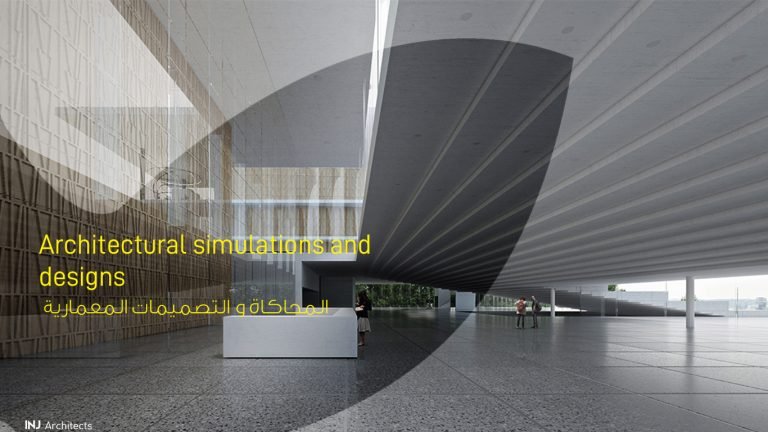SCI-Arc’s New Robot Annex: Exploring the Use of AI for Affordable Housing Solutions
SCI-Arc’s New Robot Annex: Exploring the Use of AI for Affordable Housing Solutions

Access to adequate housing is a human right. But with prices rising dramatically, incomes not growing proportionally and ineffective public policies, the lack of secure, affordable homes is fueling an ongoing global housing crisis. In fact, 90% of 200 polled cities were found to be unaffordable to live in, with the impact of COVID-19 only worsening the situation and forcing much of the world’s population to settle for precarious living conditions. This is only expected to aggravate in the not-too-distant future; by 2025, the World Bank estimates that 1.6 billion people will be affected by the housing shortage.
So, as homes become inaccessible for many, how can design, engineering and architecture contribute? Although there are continuous efforts to address the housing emergency, such as prefabrication, modular systems and self-build approaches, one promising path seems to lie in one key concept: technological innovation. From 3D construction printing to Artificial Intelligence (AI), new technologies are taking over the industry and certainly show great potential. However, there is still a lot to study and explore to truly approach the universal goal of mass affordable housing, which is precisely the motivation behind SCI-Arc’s new Robot Annex.
Located in downtown Los Angeles and based on the concept of “a college without walls,” SCI-Arc (Southern California Institute of Architecture) was created in 1972 with a pioneering focus on innovation, symbolizing a paradigm shift in architectural education. Today, it is one of the few independent architecture schools in the world and continues to function as “a scion of visionary thinking, a hub for exploratory discourse, and a laboratory for innovating the medium of architecture. For 50 years, SCI-Arc has been restless, bold, and optimistic.” Ultimately, it differs from other traditional schools in that it aims to educate architects who will imagine and shape the future, looking to find new responses to the real needs and aspirations of today’s world through experimentation.


In this context, SCI-Arc has delved into the world of AI and new technologies to fight for housing equity. This April, the school unveiled the latest addition to its robot family with an event that celebrated the inauguration of the Robot Annex, an industrial tent located in the campus parking lot. It is home to the new ABB 6700 robot, which arrived from Switzerland to Southern California in April of 2020. After two years of delay due to the pandemic and other external factors, both the robot and track were finally installed successfully.
Funded by grants from the Ralph M. Parsons Foundation and Ahmanson Foundation, the robot will be deployed to execute research led by SCI-Arc Architectural Technologies (AT) Coordinator and faculty M. Casey Rehm. The investigation concerns the utilization of automatic fabrication techniques and Machine Learning (ML) for the creation of highly customized cross-laminated timber (CLT). Ultimately, the project – supported by the United States Service’s Wood Innovations grant program – seeks to make affordable housing less expensive to build by accelerating the market for engineered wood. How? Through the development of a new process of automated design and production of these highly customized CLT panels.
Rehm, together with AT students Carolina Garcia and Andrew DePew, will be experimenting in the coming months with robotic fabrication for the CLT project. The team will be using the Deep Learning Dev Box for training an artificial Neural Network capable of producing individual layup schedules in accordance with programmatic and structural requirements.


The use of robotic fabrication ML will allow the prototyping of custom panels from low-grade lumber by strategically placing it in the panel layup without structural compromise, lowering costs and speeding production.
Parsons Foundation President and CEO Wendy Garen and Ahmanson Foundation President Bill Ahmanson spoke at the Robot Annex opening, alongside Rehm, Garcia and DePew. “Given everything happening throughout the world right now, it is so important to continue to have optimism for our future—and to support both the innovations that hold the key to creative solutions and possibilities, and the emerging young leaders who are up for taking on these challenges and making positive change,” Garen said.
By pioneering in AI research and exploring the possibilities of automated design, SCI-Arc has not only advanced its capacity to ensure that students have opportunities to experiment with state-of-the-art technologies, but it has also started building a pool of government, corporate and foundation partners to address pressing contemporary matters that exceed far beyond the institute’s walls. After all, when technological innovations are bolstered by the necessary investment and research, they can play a critical role in facing these global issues, from climate change to homelessness and the affordable housing crisis.
To learn more about SCI-Arc’s innovative AI research, visit its official website.



